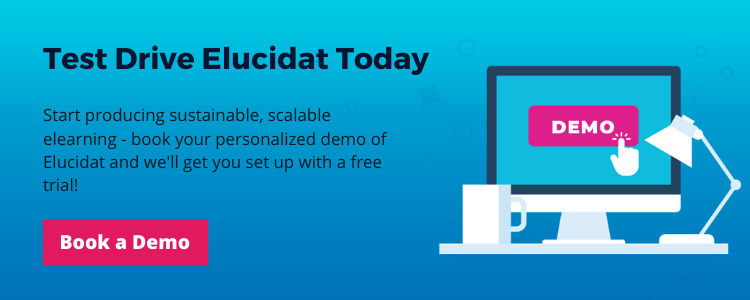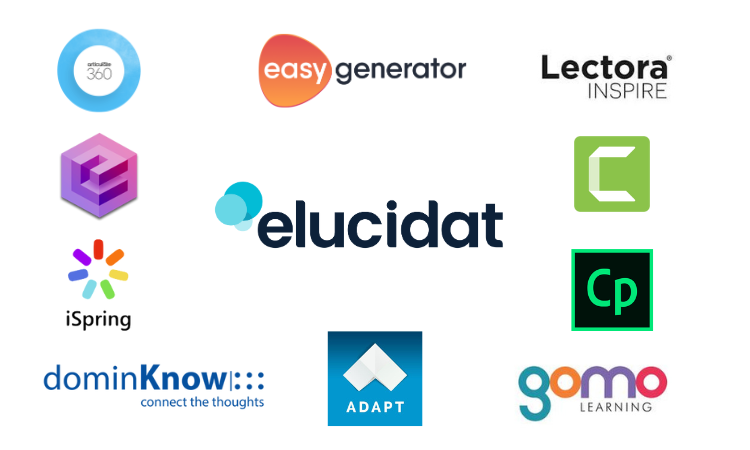Upskilling and reskilling: tips to spark lifelong learning in your workforce
5 minute read
Skill-building has always been important. The breakneck evolution of the modern workplace means it’s a necessity. According to the World Economic Forum, as many as 50% of workers will need to reskill thanks to technological advancements and the ever-evolving influence of automation in the workplace. Now, more than ever, paying attention to these concepts is crucial.

Taking a skills-focused approach to employee development is key to future-proofing your workforce. Turning your attention to both upskilling and reskilling can help you reap the rewards of lifelong learning.
L&D professionals are sure to have encountered these terms during the course of their career, but what do upskilling and reskilling really mean? Here, we take a deep dive into upskilling and reskilling in the workplace, with definitions, benefits, examples and more.
What is upskilling and reskilling?
Upskilling and reskilling are far more than industry buzzwords. They’re powerful training tools that can transform your workforce. In the context of learning and development, both concepts relate to training opportunities provided to employees with the overarching aim of diversifying their workplace competencies.
Upskilling
Upskilling is training that takes an employee’s existing skill set and raises it to the next level. Think of the differences between junior, midweight and senior level employees. There are skills and competencies needed to make the jump up the ladder. Upskilling provides all the tools needed to grow, bringing extra value to the organization in the process.
Reskilling
Reskilling is training which imparts new skills and competencies, separate from your current role. This can be used to move employees between departments, or act upon expressed interest in learning new skills. In essence, you’re teaching current employees a new discipline when you reskill them.
While there are differences between the concepts, they are two pieces of the same puzzle. The primary goal of all training is to make employees perform more efficiently and provide more value in their roles.
Whether it’s upskilling someone to perform better in their current role, or reskilling them to perform a completely new skill, reskilling and upskilling the workforce keeps the organization moving without the extra time and outlay required to find the right external hire.
Benefits of upskilling and reskilling
There’s no denying that upskilling and reskilling employees requires time and investment. You may be wondering whether it’s more efficient to hire externally, targeting those who already possess the skills in question. In reality, this is more of a gap plugging exercise. Down the line, new competencies and skills will be required, and you’ll end up chasing your tail.
Developing compelling learning and development content with a keen focus on upskilling and reskilling is a much more efficient strategy. Upskilling and reskilling have a number of benefits that far outweigh those offered by an external hire.
1: Employee retention
You wouldn’t be satisfied if the progress of your business sat still. The same can be said for employees and their own personal development. People get itchy feet when they can’t see a clear path to progression.
Perceived lack of growth and development has been cited by Gallup as the top reason employees leave their roles. Offering a pathway to new and improved skills shows that your organization is the right place for people to grow their careers, boosting both retention and engagement in the process.
2: Create a culture of learning
Arguably the most long-lasting benefit of upskilling and reskilling employees is the promotion of a far-reaching learning culture in the workplace. Regardless of where employees stand in their career, a healthy learning culture encourages them to always strive to improve.
According to PwC, 77% of workers want to upskill. The desire for a learning culture is there. Creating one by prioritizing upskilling can boost morale, teamwork and, ultimately, performance.
3: Make employees more versatile
As upskilling and reskilling expands the skill set of employees, their capabilities in the workplace become more versatile. This can manifest in the form of cross-department knowledge, as they gain useful insight into areas of the company which are separate to their defined roles. As such, they can elevate their positions within the company and contribute in an increased number of ways.
How to upskill and reskill your team
– Identify priority skills and areas for improvement
To fully reap the rewards of upskilling and reskilling, a direction is needed. To steer the learning, work with employees to identify areas which align with the company vision. Focus on the skills that are most likely to move the needle.
– Make learning accessible to all
A healthy work culture isn’t one where a select few are chosen for training and development opportunities. Creating an ‘us vs them’ divide is the last thing you want and is a sure-fire way to make employees feel disenfranchised.
Make sure all employees have access to the same quality of learning and development and any barriers in the way of providing it are hurdled.
– Empower employees to choose their direction
Allow your team members to take ownership of the direction of their learning. When employees are given the freedom to choose areas they’re interested in developing in, rather than being dictated to learn certain skills for the strict benefit of the business, the learning is more likely to be worthwhile for all parties.
– Create elearning to support upskilling and reskilling
Elearning is an engaging and sustainable option for creating upskilling and reskilling content. The digital nature of elearning compared to face-to-face training means that L&D teams can quickly respond to the need for training on specific skills. An authoring tool that enables the creation of quality content at scale, like Elucidat, empowers L&D teams and subject matter experts to build content that supports both short and long-term upskilling and reskilling initiatives.
Explore the Elucidat Showcase for examples that will inspire your upskilling and reskilling elearning designs – from in-depth process training and product knowledge microlearning, through to performance improvement.
How upskilling and reskilling creates continuous learning
Both upskilling and reskilling are a great way to promote continuous learning. By their very nature, the two concepts are dynamic, treating learning as a journey rather than a destination.
In theory, there are no limits to upskilling. There’s always more that can be learnt from a personal development perspective and there’s always new processes and technological innovations that need to be learned.
Reskilling is very much the same principle. Businesses typically consist of varying departments with varying specialities. The opportunity to reskill an employee around an unfamiliar part of the business is always going to be there. Both upskilling and reskilling can inspire lifelong learning.
Upskilling and reskilling with Elucidat
The value of upskilling and reskilling for the needs of both organizations and employees is clear. What’s more, they’re certainly here to stay.
From keeping employees motivated in their roles to enhancing understanding of new systems and advancements, both learning techniques help provide the necessary intellectual capital to achieve increased success.
If you’re looking to create elearning to support upskilling and reskilling in your business, or would like advice and inspiration on best practices here, Elucidat could be the solution for you. Book a personalized demo today to learn more.




